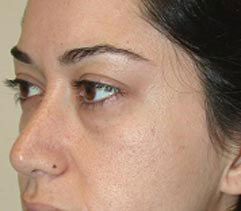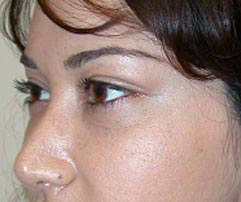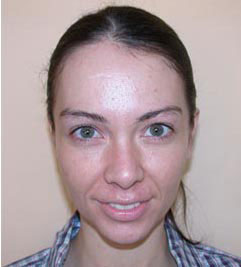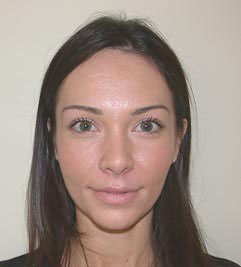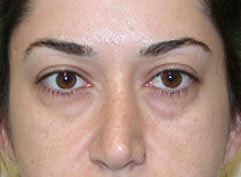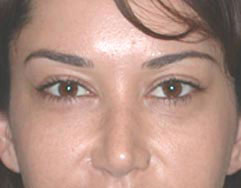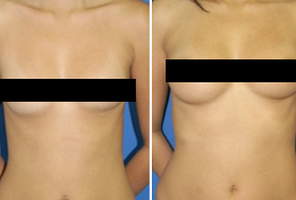 Face lift, or rhytidectomy procedures may educe signs of aging and provide a rejuvenated appearance through tightening facial skin and muscles. The degree of improvement depends upon the severity of the initial stages of aging.
Face lift, or rhytidectomy procedures may educe signs of aging and provide a rejuvenated appearance through tightening facial skin and muscles. The degree of improvement depends upon the severity of the initial stages of aging.
A number of surgical techniques have been grouped under the umbrella term of face lift surgery. Despite the numerous methods available to perform a face lift, the basic goal underlines different surgical techniques.
Face lift surgery is designed to reverse the effects of aging by eliminating the physical evidence of time such as deep creases that form between the nose and mouth, the evolution of a jaw line that has lost elasticity, and the appearance of folds and fat deposits around the neck. Through the removal of excess fat, tightening of muscles, and the re-draping of skin, a more toned and radiant appearance can result.
A face lift does not include lifting the forehead and doesn't completely raise the mid and central face. A browlift or forehead lift is recommended for treating a sagging brow or mid face.
Who is a candidate for a Face Lift?
A face lift is considered a major operative procedure. A surgeon will remove as much skin as is safe to provide a natural result depending on the particular facial contour. The skin type, degree of preexisting sun damage, age and the aging rate of each patient are factors that help determine the final result as well as candidacy.
The best candidate for a face lift has facial and neck skin that has lost some of its firmness and elasticity, but which has retained some elasticity and is thus capable of reshaping. While face lift procedures are widely sought after for those over forty years of age, it is becoming increasingly common for those under forty as well. Many patients prefer early or preventative corrections to maintain a desired appearance. Those with reasonable expectations and a firm knowledge of the procedure are good candidates since face lift surgery cannot permanently erase all creases including the lines around the mouth and eyes and may not offer complete removal of existing lines.
How is a Face Lift performed and what should be considered?
During an initial consultation, a complete medical history is required, specifically pertaining to any medical conditions that could cause complications during or after the surgery, such as uncontrolled high blood pressure, blood clotting problems, or a tendency to form excessive scars. Patients that are smokers are asked to stop smoking well in advance of surgery. Regular smoking constricts blood vessels resulting in decreased blood flow to a given area, which can prevent normal healing.
A rhytidectomy is a cosmetic surgical operation in which loose muscles of the face and neck are tightened, and the face contours area defined through the removal of excess skin which interferes with a toned appearance. For the best results, pre-operative and post-operative skin care and rejuvenation, such as laser skin resurfacing, chemical peels, etc. may be used. Other surgical procedures like liposuction, eyelid surgery, a brow lift, or a chin implant may be required to improve the overall appearance of the face. These additional procedures will be discussed separately as they are not an actual part of the face lift operation.
Operation time usually requires approximately two hours. It may be performed under local anesthesia with intravenous sedatives as required to ensure patient comfort, or under general anesthesia. An anesthesiologist or nurse anesthetist will be present to administer sedatives (or general anesthetic) and assist in monitoring.
As a general rule, the incision starts high in the temple area (hidden by the hair) and progresses down in front of the ear, around the earlobe, and then up behind the ear before curving gently back into the hairline of the neck. In some circumstances, it may be necessary to add an incision under the chin.
Using the above incisions, the skin is lifted forward onto the cheeks and down as far as the jaw line and into the neck. The underlying muscles are then lifted accordingly in order to ensure a longer lasting effect. After repositioning the deep tissues, leaking blood vessels are sealed. Following this, the skin that has been loosened off from the underlying tissue is lifted upwards and any excess skin is removed. Finally, the wound is closed with a combination of sutures and/or miniature staples. A bandage dressing is gently placed around the face in order to apply light pressure over the area.
At the completion of the operation, drainage tubes are frequently placed beneath the skin to minimize swelling. These tubes are connected to a bulb. It is necessary to empty the drainage fluid a few times at home. The nurse will give instructions at the time of discharge. The patient may choose to go home on the day of surgery or spend the night with an office consultant or nurse. The drains will be removed in the office usually on the first post operative visit.
What is the recovery period like after a Face Lift?
Bandages and drains (if used) are removed the day following surgery, and hair will be carefully washed. Over the next few days hair should be washed daily with a gentle shampoo and great care should be exercised in the suture area. Stitches in the skin and metal clips used within the hairline are removed after eight days.
A tightening of the skin around the face may be experienced as a result of the bandages. Most face lift patients report a surprisingly small amount of discomfort following their procedure. Most patients experience a numbing sensation once the bandages are removed, which improves with time.
A feeling of tension in the neck and cheek areas as well as around the ear may also be experienced. This is a result of the small sensory nerve fibers in the skin being separated during the operation. Sensation usually returns to normal, but may take up to nine months.
Following surgery some swelling and bruising of the face may be experienced. This can last 3-6 weeks. As a result of the swelling, some temporary lag in the normal motion of facial muscles may also be experienced, but this usually subsides gradually without the risk of permanent change.
Initially, facial skin and appearance may be strange. Facial features may be distorted from the swelling, and facial movements may be slightly stiff. Scars may be visible during the initial healing stages. By the third week post-surgery, most patients are progressing toward full recovery and are back at work ten days to two weeks after surgery. If desired, camouflage makeup can mask most remaining bruising.
Simple activities may be performed in a day or two after surgery, but plenty of rest is required for healing during the first week post-surgery. Gentle touching if any on the face and hair should be kept to a minimum since the healing skin may be tender and numb. Strenuous movement, exercise, or physical labor should be avoided for at least two weeks.
As with any cosmetic procedure, there will be some scarring. The scars can take many months or even years to heal. Scars may be red, raised, lumpy and even itchy at the outset of healing but they should fade and flatten with time as part of the healing process. For most patients, the entire healing process can take up to two years to complete.
What are the risks associated with a Face Lift?
Individuals vary in their anatomy and their healing abilities. Hence, the outcome of surgery is never completely predictable. As with any surgical procedure, there are always risks. These include, the risk of infection, bleeding, bruising, unequal discoloration and swelling of the face, blistering of the skin and skin loss around the ears. Blistering of skin and skin loss are more frequently seen in smokers and smokers are urged not to smoke one week before and for three weeks after the operation (longer ideally).
Other potential complications can include nerve damage causing temporary or permanent loss of feeling in the face or weakness of facial muscles. People may also have a bad reaction to anesthetic administration.
There are a number of risks associated with surgeries of various kinds and this list is not exhaustive. It is important to have a thorough discussion with a cosmetic surgeon to gain a very clear understanding of the procedure from start to finish as well as any potential risks associated with the procedure.
How much does a Face Lift generally cost?
Face lift costs vary based on location, the cosmetic surgeon, demand, the time and effort required during the procedure, as well as what's required during the procedure from start to finish (lab fees, anesthesiologist, hospital stay fee, etc.) Generally, spending anywhere from $6,000-$10,000 can be expected.
The exact cost of the procedure is of course highly variable and based on the specific situation. To consult with a cosmetic surgeon and discuss face lift cost, find a surgeon in your area that is right for you.
Featured Cities:
Scottsdale | Beverly Hills | Santa Ana | Cherry Hill | Houston
Disclaimer: This information is intended only as an introduction to this procedure. This information should not be used to determine whether you will have the procedure performed nor does it guarantee results of your elective surgery. Further details regarding surgical standards and procedures should be discussed with your physician.
By OnlineSurgery Staff & Dunya Atisha, MD
Updated: November 13, 2008
